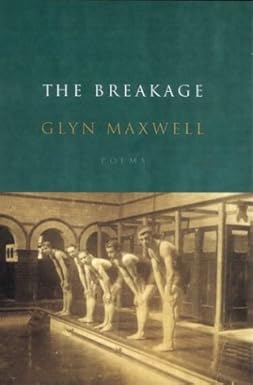My problem with Southern poetry, in general, is that it often takes the form of, “hey, remember when we were kids, and we did this or that, and the grownups behaved a certain way? I kind of miss that.” Or, it simply presents a stoic, deadpan image of a stoic, deadpan people. Many of the requisite images recur and recur: the barns, the tobacco fields, a particular species of tree, the scrimping mother and repurposed rags. And of course, there’s race and religion–some poets seem to acknowledge the necessity of discussing such issues without actually discussing such issues (but rather, falling back into the safety of nostalgia or dispassion).
Crab Orchard Review dedicates its most recent issue to what it calls “Old & New: Re-Visions of the American South.” And while some of the poems do exhibit some of these traits, many succeed in breaking through the pattern. I was particularly intrigued by the first poem in the volume, “Yesterday, four nurse sharks washed up on Wrightsville Beach,” by Lavonne Adams. The description is intense and attentive, as when the mangled sharks are portrayed “trailing / loops of blue intestines,” “brightened by patches of ragged pink flesh,” while their fins in the morning light “flow / coral, a shade too lovely for death.” (Of course, even this fine poem shifts back to a childhood memory, and closes with a prayer of sorts. Also, the poet might want to consult a dictionary regarding the difference between “further” and “farther.”)
Richard Boada’s “Louisiana Fugue” was another bright spot. It opens:
The barber has been bankrupt
since the flood. The town’s bald,
men and women, no longer visit
since the lakes rose and stunned.
I love the way the second line ends—”the town’s bald,”—because it forced so many rereadings: First, I read “the town is bald,” but realized that wasn’t right. Then, I thought the comma was incorrect, and read “the town’s bald men and women,” but the second comma clearly delineated an apositional phrase. Finally, I read “bald” as a collective noun, further described by “men and women.” On the other hand, I think the poet might need to consult a dictionary about the difference between “lipid” and “limpid” in the phrase “tonics on shelves / mulitply in lipid mirrors.” (Though admittedly, the correct “limpid” does not sound quite as neat).
In “What I see Now,” Kathryn Stripling Byer moves narratively from the culture of the Southern debutante to the bombing of the Montgomery baptist church decades back. A poem in two parts, it starts with a literal revisiting of place and moves to the past (which is a different country, after all). Both parts are formally united in their final stanzas, which move from a freeflowing long narrative line to a short series of clipped lines, each 3- or 4-syllables long.
I also liked the aphoristic pronouncements of Amorak Huey’s “Wade Walton’s Barber Shop,” which notes, “nothing / outlasts music,” and “every train whistle / sounds like the one before, the one after.” And still, depsite the quiet desperation, the poems ends on a note of awe, of walking out “into this wonder / and smoke and silence of springtime.”
Another highlight was “Maple Ridge,” by Erika Meitner. This disturbing narrative juxtaposes the attempt of a mother to lead a normal, civilized life (as might be defined by a university professor) against the pride of a man teaching his prepubescent stepson to wield an assault rifle. The title hearkens back to “Ruby Ridge,” which has became sort of an Alamo moment for the weaponized radical right. The poem takes on even deeper connotations in light of Ms. Meitner’s current position (as noted in the the contributor bios) as a teacher in the MFA program at Virginia Tech, site of a recent student massacre by a deranged man carrying more firepower than reason would allow. Once again, though, the poet needs to consult a dictionary about the difference between “dissemble” and “disassemble” in the lines, “The wind does not howl. / It surgically dissembles / each set of metal chimes / we hang from the porch eaves.”
Another standout was James Thomas Miller’s “George Jone’s 4th of July Party, 2000,” which tells a quirky narrative that revolves around a Southern gothic character.
Jenna Rindo’s “Swallow a Southern Cure” was notable as being among the very few (perhaps the only?) poem in the volume to employ some sort of formal device–in this case, the pantoum form. The pantoum, which repeats two lines from each stanze in the following stanza, can be limiting, to be sure, but Ms. Rindo is not strict in her interpretation, and the result is surprisingly fluid.
Two poems by John Willson also merit mention, “The Good Appetite” and “Blacksmith.” As for the first, I’m reminded of a poem by Billy Collins that remarks how few poems are written from a position of contentment. The whole poem comprises a single sentence, which gradually builds to its crescendo summary: “you are ready to go on.”
“Blacksmith” mentions the “Gullah tour” of Charleston, which ties it thematically with the following “Gullah Women,” by P. Ivan Young. This poem, too, has some remarkable language:
On James Island sea oats quiver tidal creeks
crabs crawl the sulfured air, a skiff protrudes
from pluff as if half forming itself from decay.
The world collapses on rising tides.
Such language is all the more striking in juxtaposition to the Gullah patois, which seems incapable of expressing such ethereal beauty.
Of course, the connection from one writer to the next is coincidental: the poets are arranged in alphabetical order. I can’t help wonder wether a more focuses editorial eye could have positioned the poems in a way that might suggest deeper connections and evoke subtler nuances.

